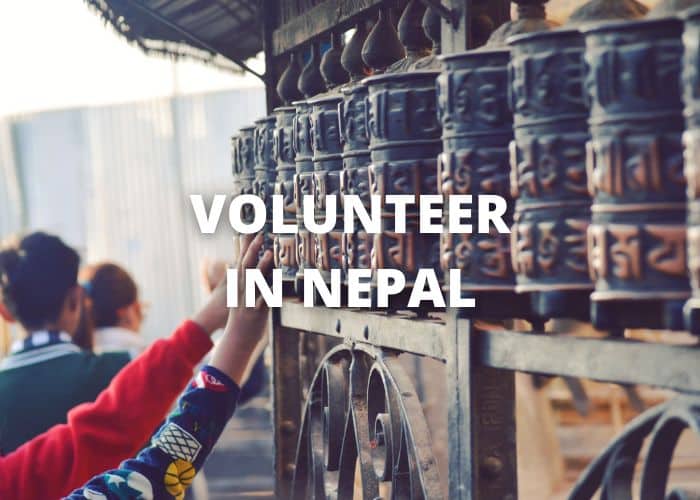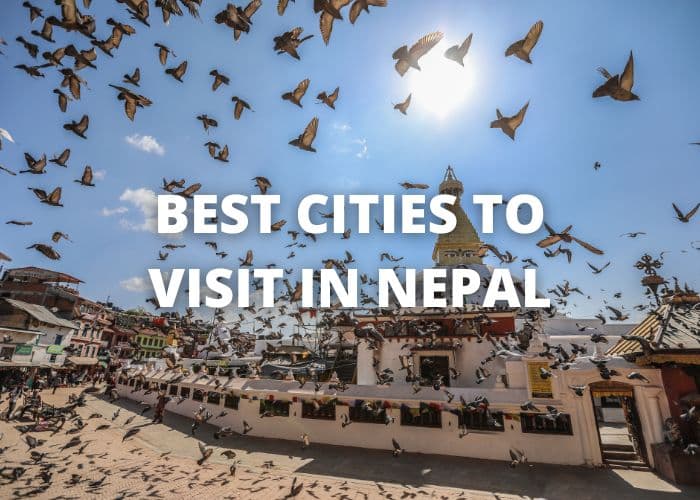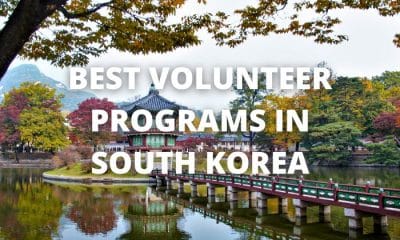Nepal
Volunteer Nepal
Why volunteer in Nepal? Volunteer Opportunities in Nepal Why join Volunteer Programs in Nepal?
If you’ve been considering a volunteer trip to Nepal, you may be wondering how to go about it. There are many different ways to get involved. You can help feed and care for children, take care of very young children, or work with older children. You can also help out by building or extending school facilities in the local community.

Why volunteer in Nepal?
Before making your decision to volunteer in Nepal, make sure you research the programs and organizations thoroughly. Reach out to past participants and ask them about their experiences. If possible, try to find a project that uses your skills or those of other participants. If you’re unsure about your skills, brainstorm some ideas.
While you may want to do everything yourself while you’re away, it’s important to include a support system back home. Family and friends can provide you with backup copies of important information if needed. You can also follow the work of volunteer organizations on social media, and network with former volunteers. This way, you can get a feel for the work they do.
Volunteering in Nepal is a fantastic way to help those in need. You’ll be working with local communities and learning about their culture and traditions. Many projects rely on the generosity of volunteers and donors to continue their work. It’s also a great place to learn about yoga and meditation, which are popular in Nepal. Many people in the region practice these practices daily and you may find yourself incorporating them into your own daily routine.
Volunteering in Nepal is a fulfilling and memorable experience. Whether you’re teaching English to children, keeping an orphanage, or caring for an elderly person, you’ll become a part of a new culture. You’ll also learn a new skill or two as you interact with new people. You’ll also discover more about yourself in the process.
Volunteers in Nepal will be placed in public or private schools to teach English to students. They’ll also help with homework and administrative tasks. While you’re working with these children, you’ll be immersing yourself in the culture, as many of them don’t speak English at home. You’ll be interacting with their parents and learning about the local customs. Ultimately, your efforts will make a difference in their future.
Nepal is a beautiful country that is rich in culture and natural beauty. Its famous landmarks include Mount Everest, the birthplace of Buddha, and a diverse landscape. The country also boasts over 70 different languages and dozens of traditional festivals. Volunteering in Nepal can be a life-changing experience for you and the people in Nepal. You’ll have the chance to change the lives of many locals and contribute to the country’s well-being during difficult times.
Volunteering in Nepal can be a life-changing experience. Rather than simply bring back a few prayer flags and a warm greeting, take your time to learn more about the culture and the people of Nepal. After your time there, keep in touch with your contacts and look for new volunteer opportunities.
Volunteering in Nepal is a great way to help the local community and experience a unique cultural and natural environment. If you’re looking for a life-changing experience, volunteering in Nepal is a great choice. Many organizations in Nepal have taken care of the logistics for foreigners to volunteer in the country. However, you’ll still need to do your research and read about volunteering in Nepal so you can decide what’s right for you.
Nepal is a small country with a rich history, vibrant festivals, and incredible cultural heritage. Travelers should take note that one-third of the population lives below the poverty line and has struggled to recover from the devastating earthquakes of 2015. Choosing to volunteer in Nepal is a great way to help those in need and help the country move forward. There’s no better way to make a difference than by putting your energy to good use in the country.
Volunteer Opportunities in Nepal
Volunteering in Nepal is a great way to give back to a community, learn about a new culture, and meet new people. Whether you wish to work with children or elderly residents, you can find a variety of opportunities here. The best way to ensure a positive experience is to research the country and your host family thoroughly. It is also essential to consider safety considerations.
Before you travel to Nepal, check if the volunteer organization has in-country support. This team will accompany you on cultural excursions and to the projects. In addition, they will help you get acquainted with your host family and the volunteers you will be working with. The in-country support team will also be able to answer any questions you might have about the country and your project.
Volunteering in Nepal can be an affordable and rewarding experience. You will be able to make a difference in the learning practices of local students while you help others in need. Volunteer teaching positions in Nepal are available in several subjects, including English. Most programs offer accommodation with a host family or a volunteer house nearby.
You can also get involved in projects in the city and the surrounding regions. The capital, Kathmandu, is a fascinating city that offers a variety of volunteer opportunities. Its tangle of backstreets and beautiful temple squares make it an incredible place to spend some time. There are also several other towns nearby with fascinating histories and architecture. Volunteer projects in the city include teaching, childcare, medical placements, and women entrepreneurship.
While volunteering in Nepal, you may live with a local host family. Your host family will provide you with meals and lodging. They will also introduce you to local culture. In addition to living with a local family, you will enjoy three home-cooked Nepali meals each day. The accommodations in your host house will be comfortable and will provide you with a safe living environment.
Volunteering in Nepal can be rewarding and enriching. In addition to improving your own English skills, you can also help the monks in their studies. This is a great opportunity to help monks understand the world and the people in it.
Why join Volunteer Programs in Nepal?
If you’re wondering why to join volunteer programs in Nepal, you are not alone. The majority of the population lives in poverty and the country is plagued by natural disasters. The mountainous terrain and remote locations of the country make access to resources difficult. In order to help people in these remote areas, you can offer your skills to help the local community.
Volunteering in Nepal is a great way to experience the country and meet the local people. It’s also a great way to explore different parts of the country, including the Chitwan National Park, the capital city, and many other stunning locations. It also gives you a chance to get some rest and refreshment. You can also take part in guided trekking tours around different hiking circuits in the country. These can be once-in-a-lifetime experiences.
Volunteering in Nepal offers many unique experiences, from teaching English in public schools to working in orphanages. You can also choose to volunteer with local organizations, including helping in medical and dental clinics. If you’re over 18, you can join an ELI program and volunteer in Nepal for six to eight weeks. The program is highly rated and many previous volunteers have written blogs describing their experience.
Volunteering in Nepal offers a unique opportunity to make a difference while enjoying an unforgettable travel experience. There are many organizations that have set up volunteer programs in Nepal. All you need to do is find the one that matches your skills and values. By reading up on the different projects and comparing them with your own interests, you can make the right choice.

Nepal
Best Time to Visit Nepal
The best time to visit Nepal depends on your preferences. If you love trekking and are looking for clear skies and fresh air, the best time to go is March to May. Then again, you can also visit the Chitwan National Park between September and November. However, if you want to see the best wildlife, visit between April and May when the park is in its dry season and water sources are scarce. If you want to see wildlife but aren’t keen on the heat, you can go between January and March, which is a good compromise.

Monsoon season
Traveling to Nepal in the monsoon season from May to September will give you a chance to witness the most beautiful scenery and spiritual sites. While temperatures may be higher, the weather is also more manageable, and you’ll find that trekking trails are usually quieter. The monsoon season is not the worst time to travel to Nepal, but it is important to be aware of the risks that come with it. Although rain can be heavy and the roads may be closed due to landslides, the mountains are still covered with clear, beautiful views.
The monsoon season typically begins in mid-June and lasts until late August, but the dates can vary. During this time, clouds can obstruct mountain views, making travel difficult. Because the rains can cause landslides, many trails are closed. Monsoon season can also disrupt transport and decrease tourism. However, the weather is generally warm and pleasant throughout the country. However, there are some places in Nepal that are only accessible during the monsoon season.
While the monsoon season in Nepal is not the best time for mountain climbing, it is the best time for trekking and mountaineering in the region. Although the winter months are harsh, summers are more pleasant for city tours and volunteering work.
Autumn
Autumn is the best season to visit Nepal for sightseeing and trekking. Autumn offers the best visibility and weather conditions. This season is also ideal for viewing endangered wildlife and plants. It is also the best time to take a jungle safari. You’ll have a better chance of spotting the elusive Bengal Tiger and other animals during this time.
After the monsoon season ends in late September, Nepal will see a gradual change in weather. During this time, temperatures will be in the low 20s Celsius and low 70s Fahrenheit. You’ll also experience plenty of sunshine. September is also one of the best months to trek in Nepal. You’ll be able to enjoy clear skies, moderate temperatures, and beautiful views. The fall season is also the time when many festivals are held in the Himalayan region.
Autumn is also a great time to see the harvest festivals. The Janai-Purnima festival is very similar to Raksha Bandhan in India. And the Kora Cycling Competition is another fun and exciting event to behold. With all these festivals, you’ll find autumn in Nepal to be one of the most exciting times to visit Nepal.
During autumn, you can easily spot animals at a distance. This is also the best time to see bird migration. In addition, autumn is also the best time to experience Nepal’s cultural festivals. Usually, these festivals are held during the months of October and November, although the dates can change.
Spring
There are four main seasons in Nepal. Summer is the hottest, but the build-up to the monsoon brings relief, and the rains bring the countryside to life. In the winter, the weather is mostly clear but can get seriously cold in trekking areas. Spring brings clear, warm weather. Autumn is cool and fresh, following the recent rains.
Summer is considered the off-season in the tourism industry, which means fewer tourists mean lower prices. In addition, summer is a great time for sightseeing and exploring Nepal’s pristine landscapes. Most service providers also offer special deals during this time. You can also experience some of the country’s traditional festivals during this time.
The weather is mild in Nepal during spring, which begins in March and lasts until late May. It is also the rhododendron blooming season, which means the scenery is a sight to behold. In addition, temperatures are typically around 30°F. However, you should avoid the monsoon season, when temperatures are around 95degF and humidity are high.
The climate is a major factor when choosing the best time to visit Nepal. Spring has stable weather, so trekking routes are less crowded. Also, higher mountain areas offer the best conditions for high-altitude treks, such as the Annapurna Circuit Trek or Kala Pattar. The weather is also warm enough to enjoy off-the-beaten-path treks. In addition, a number of festivals are held in spring. These include Holi, Nepal’s New Year, and Yarthung Horse Festival, which is held in June in Manang.
Dashain
If you’re considering a cultural tour of Nepal, then you’re at the right time of year. Dashain, a Hindu religious festival, brings temples open to the public and devotees to flock to pray for the goddess Durga. The Taleju Bhawani temple, for instance, is open only during this time of year.
This is the largest and most important festival in Nepal and is celebrated throughout the country. It emphasizes the unity of the Nepalese people and universal brotherhood. In addition to celebrating the goddess Durga’s victory over the demon Mahisashur, Dashain is a time for feasts, family gatherings, and traveling throughout the country.
October is a popular time to visit Nepal. The skies remain clear and temperatures are pleasant during this month. In October, you can hike the Himalayas and participate in the festival of Dashain. In November, temperatures rise to around twenty-six degrees in Kathmandu and 26 degrees in Pokhara. Temperatures are higher on the Terai and cooler in the mountains.
After the monsoon, the country experiences a dry season with low humidity. This is the best time to trek through the Himalayas, and trekking trails are uncrowded. However, the monsoon rains can still be heavy and snow-covered. Because of this, you will have to plan your itinerary carefully.
Full moon
While the full moon is a great time to visit Nepal, it’s not the best time to travel during the month. Heavy rains can cause flights to be canceled and road closures are possible. Make sure to check with your hotel in advance of your trip for road conditions and pack waterproof clothing. Once the rains stop, the temperature remains very hot, so you’ll want to bring an extra layer of clothes and keep your electronics in a waterproof bag.
If you’re going to be trekking in the mountains, the best time to travel to Nepal is during the spring season. During this time, wildflowers bloom in abundance, and you can enjoy the beautiful scenery and the mesmerizing sounds of birds in the forest. The temperatures are mild in the lower elevations and moderate at higher elevations. If you’re planning to spend a couple of days sightseeing in the mountains, this is an excellent time to travel to Nepal. During this time, you can also enjoy popular festivals like Holi, Mahashivaratri, Basant Panchami, and Buddha Jayanti.
If you’re planning on getting married in Nepal, you’ll want to make sure you book your trip for a full moon in September or October. Festivals in Nepal are governed by the lunar calendar, and the dates of the main celebrations change each year. For example, the Nepalese New Year falls in April, and the five major festivals are Holi (September/October), Tihar (November), and Teej (late summer). While visiting Nepal during these times, be sure to be respectful of the customs and respect their traditions.
Nepal
Top 10 Things to Do in Nepal
If you’re a nature lover, adventure junkie, or both, Nepal is a must-visit destination. So if you’ve been delaying your trip for some time now, it’s time to book your tickets and start planning. You’ll have a more adventurous and interesting vacation if you try out some of these top 10 things to do in Nepal.

Trekking
One of the best things to do in Nepal is to go trekking. This adventure can take you up to the high peaks of the Himalayas. If you aren’t into trekking, you can still enjoy nature by visiting the national parks and wildlife refuges. But if you prefer something more adventurous, you can try paragliding or mountaineering.
In addition to trekking, you can visit the Everest museum to learn about the history of trekking. Despite the reputation of Nepali food among travellers, there is a lot more to Nepali food than hearty lentil soup. The museum even has an exhibit on the long history of trekking in the country.
If you have the time, you can go trekking through the picturesque Annapurna mountain range. You can also hike through the less-visited Langtang National Park or the Tamang hinterland. This will offer you a chance to immerse yourself in the local culture, and marvel at the panoramic views of the Himalayas.
One of the best treks in Nepal is the Everest Base Camp trek, which begins in Pokhara and ends at the base camp in the eastern region. This trek lasts anywhere from six to sixteen days, and is an ideal way to experience the spectacular views of the Himalayas.
Yoga
If you’re on a hiking trip in Nepal, you might be interested in practicing yoga. Yoga can be very beneficial for the body and mind. It can help you recover from the mental and physical strain of high-altitude trekking. Nepal has many yoga studios where you can practice this ancient art.
Pokhara is one of the most popular places to practice yoga in Nepal. Here you can combine your practice with other leisure activities. There are many places to practice yoga and meditate in the area, including the beautiful Phewa Lake. You can also take a boat tour, paragliding, and zip-lining. While you’re there, be sure to take some time to enjoy the beautiful views of the Himalayas.
Another way to enjoy yoga in Nepal is to take a yoga rafting trip. You can begin your trip in Dolalghat, a three-hour drive from Kathmandu. You’ll have a chance to practice with Danish certified yoga instructor Gitte Nordentoft, who combines hatha and vinyasa yoga techniques. She also offers evening sessions. This activity will help you improve your flexibility and heat, which are both necessary for performing advanced yoga postures.
You can also go on a yoga retreat in Nepal. These retreats typically last for 7 days to a month, and can combine a short trekking tour with a meditation retreat. While you’re in Nepal, make sure you check out the many yoga centers in the country.
Visit to National Parks
The national parks of Nepal protect a variety of unique ecosystems and wildlife. These areas include the Himalayas, Terai, forests, hunting reserves, and wetlands. They are also home to a number of indigenous ethnic communities. Visitors can experience the diversity of these ecosystems by taking part in activities such as trekking, elephant back excursions, and river rafting.
Shuklaphanta National Park is located in Kanchanpupr district, Nepal and is home to the Bengal Florican, marsh deer, and Indian python. The park also hosts Indian rat snakes and kraits. Visiting the park is best during mid-September to mid-December.
Khaptad Swami National Park, established in 1984, is located in the mid-mountain region of Nepal and is home to a variety of animals and plants. It was named after the late Khaptad swami, who lived and meditated in the region. The best time to visit this park is from March to May. While autumn is the best time to see the wildflowers, visitors can also explore the medicinal plants in this region.
In addition to the tiger and leopard, Nepal has numerous other wildlife species to offer. The Khaptad National Park, located in the far western part of the country, is a birdwatcher’s paradise. It is home to more than 400 species of birds, including the endangered painted stork. In addition to these animals, the park has high spiritual importance.
Visiting UNESCO World Heritage Sites
Visiting UNESCO World Heritage Sites is a great way to experience the rich culture of this beautiful country. You can view ancient monuments, Hindu temples, and the birthplace of Lord Buddha, as well as national parks, wildlife refuges, and more. Each of the sites has a special meaning, and its ongoing preservation helps to preserve the cultural properties of the region.
UNESCO is a United Nations bureau that supports the protection of cultural and intellectual property. World heritage sites are chosen by the organization due to their “outstanding universal value.” This means that they are meaningful to humankind and are protected under international treaties. This makes the sites even more impressive.
In addition to Mt. Everest, you can also visit the Sagarmatha National Park, which is home to the world’s tallest peak, Mt. Everest (8,848 m). It is the most difficult UNESCO World Heritage Site in the world and was declared a national park in 1976. The park also includes several other peaks over 6,000 meters, including many of the world’s highest mountains. The park was also a filming location for numerous hollywood movies.
Another UNESCO World Heritage Site in Kathmandu is the renowned Durbar Square. This medieval palace was the royal residence of Nepal’s Malla kings. Visiting this site is a wonderful way to experience the culture and history of Nepal. The square is also filled with wonderful sculptures and architecture.
Visiting Buddhist temples
One of the top things to do in Nepal is to visit Buddhist temples. You can visit the Boudhanath Stupa, the largest Buddhist Stupa in the country. Located in the city of Kathmandu, this temple is a religious center of the Buddhist religion. It was first built in the 5th century and has been restored several times. It is a UNESCO World Heritage Site and is accessible by road or cab from the Tribhuvan international airport.
For those interested in Buddhism, a visit to a Buddhist temple is a great way to learn about the history of Buddhism and the Buddhist religion. Those with a spiritual bent should plan a trip to Tibet as well. This ancient region was closed to outsiders for centuries but is now open to visitors. This enchanting country offers a rich variety of experiences.
Visiting Buddhist temples is a great way to enjoy a peaceful atmosphere. The surrounding landscape is filled with stunning mountains, including the Himalayan range and Mount Everest. You can enjoy some local food during your stay, but we recommend booking a hotel with a Himalayan view. You will be able to enjoy the local cuisine, which is heavily influenced by India and Tibet.
Buddhist monasteries are popular places to visit in Nepal. Many of these temples are located in remote mountain regions. Traveling to these locations can be a hassle, so be prepared for this.
Nepal
Best Cities to Visit in Nepal
When traveling to Nepal, it’s important to find the right city for your vacation. Luckily, there are many great options, including Kathmandu, Bhaktapur, Pokhara, Janakpur, and more. Below, we’ll talk about each city’s unique attractions, as well as what to do and see while visiting each one. To start, let’s look at Kathmandu.

Kathmandu
One of the best cities to visit in Nepal is Kathmandu, which is located in a bowl-shaped valley at an elevation of 1,400 meters. It boasts a variety of historical landmarks, including the Unesco-listed Boudhanath Stupa and the Swayambhunath temple. Also within the city are the Kopan Monastery and the Hanuman Dhoka Palace. You can also enjoy lively nightlife in the Thamel district.
The Patan Durbar Square is another attraction. This beautiful neo-classical garden is lined with verandahs, fountains, and pavilions. The Patan Durbar Square is also home to Kaiser restaurants, which serve burgers and a wide selection of western food. In addition, you should visit Panauti, a quaint Newari village located two hours outside of Kathmandu. This traditional Newari village is surrounded by rice terraces and is a beautiful place to visit.
If you are planning to visit Nepal for a holiday, there are many places to visit in the country. Kathmandu is a cultural hub with over a million inhabitants and a bustling city centre. The city boasts a wide range of sights, including ancient royal cities, beautiful temples, and delicious Nepalese cuisine.
Bhaktapur
One of the best places to visit in Nepal is the ancient city of Bhaktapur. This small district is home to some of the country’s most beautiful art and architecture. Its pedestrian streets and maze of temples transport visitors to another time and place. UNESCO has listed Bhaktapur as a World Heritage site.
Despite being damaged by the 2015 earthquake, Bhaktapur still maintains its historic value and architectural treasures. Many buildings date back more than 600 years, and the city’s three main squares are lined with alleys and tucked-away courtyards. It used to be an independent kingdom, and it retains some of its medieval heritage. Visitors will want to spend at least a day here to explore the ancient city.
Bhaktapur’s Durbar Square is a UNESCO World Heritage Site. This was once the home to the royal family of Bhaktapur. This historic center, also called Khwopa, contains temples and royal palaces. The square contains some of the oldest buildings in the Kathmandu Valley.
Pokhara
Pokhara is a Himalayan city that combines beauty and comfort. You’ll find many things to do in Pokhara for tourists of all budgets. Its numerous yoga retreats and classes are a great way to unwind and find balance. The city is also a great place for a massage. There are numerous locations for this type of massage in Pokhara, and you can find something to fit every need and budget.
Pokhara’s many tourist attractions include Phewa Lake, a large lake surrounded by snow-capped mountains. The city is much slower-paced than Kathmandu, and there is a much more laid-back vibe. The Phewa Lake is one of the city’s main attractions, and the surrounding area is full of coffee shops, pubs, and restaurants serving both local and international cuisine.
Pokhara is also home to a number of caves. Mahendra Cave, located near the west of the city, is famous for its stone carvings. It’s a popular spot for tourists as it has a unique nocturnal roosting system and is home to a nocturnal flying bat. There’s also a Hindu temple inside the cave, where a symbolic Shivalinga is preserved.
Janakpur
Janakpur is known for its unique art and culture. Its mud walls are decorated with vibrant paintings of animals and people. The town’s villages are filled with life and culture. Visitors can go rickshaw riding and shop for local products. The city is also famous for its Mithila art, which has been practiced for centuries.
In the city center, you can visit the Janaki Mandir, which is a temple dedicated to the goddess of mercy. This beautiful pagoda-style temple is the location where Lord Rama and Sita married. The temple is surrounded by two ponds.
The city is a popular tourist destination for pilgrims. The town is home to the Ram Janaki Temple, the largest temple complex in Nepal. The temple is built on the site of the birthplace of the Goddess Sita, making it a powerful spiritual presence. The temple is surrounded by beautiful artistry and is a good place to spend an afternoon.
Lalitpur
Lalitpur is a city that is perfect for exploring on foot. It is home to many handicraft shops and restaurants. There are also a few temples that you must visit while you are in the area. The Golden Temple, Kumbeshwar Temple, and Ashok Stupa are all located in Lalitpur.
The Patan Museum is another popular site in Lalitpur. There are many pieces of art on display here that date back to the 16th century. The museum was formerly the royal palace. The palace was home to the Malla rulers who ruled the region.
The people are friendly and welcoming. However, the city is crowded and you may encounter traffic jams during work hours. The rent can be expensive depending on the location. In Lalitpur, it is important to respect elders and understand the local language. Also, remember to wear a mask when you go out in the streets and wash your hands after buying food.
Phulchoki
Phulchoki is a popular mountain peak in Nepal. Located just south of Kathmandu and at a height of 2782m, Phulchoki is a favorite hiking destination for both international and internal tourists. This mountain offers 360-degree vistas of the Terai and Himalayas, as well as a variety of flora and fauna. This region is also home to over 250 species of birds, leopards, and deer. In addition, Phulchowki is home to a number of goldfish that give the place its colorful atmosphere.
While in the area, tourists can enjoy the beautiful scenery and ancient architecture. There are plenty of shopping opportunities, including a variety of Nepali products. There are also multiple restaurants, guesthouses, and shopping centers. The best time to visit the area is at night, when the city comes alive with live music and delicious cuisine.
If you are looking for a romantic getaway, Nepal offers plenty of options. Pokhara, for example, is the ideal place for couples. The lakeside city is surrounded by the sweet scent of rhododendrons, which make for an unforgettable romantic date. It also moves at a slow pace, so it is a great place to spend some quality time with your partner.
Dharan
Dharan is known as the Eton of Nepal and is home to many educational institutions. Visitors to the city can enjoy the view of the city from Vijayapur Hill. The city also has many cultural and religious sites. Popular landmarks include the Saptarangi Park and the Raja Rani Lake. The city is also home to over 25 temples. Some of these sites include the Buddhasubba Temple, which is said to grant wishes, the Pindeshwor Temple, which is dedicated to the five pious Hindu goddesses, and the Datankali Temple, which is a Shakti Peetha.
Bijaypur is a popular locality in Dharan. It is conveniently located close to the city center. From there, you can visit the Buddha Subba Temple and the Dantakali Temple. These temples are important religious sites for the Hindu community. Many visitors stay in Bijaypur while touring the city.
Phewa Lake
The city of Pokhara is surrounded by the Phewa Lake, the second largest lake in Nepal. This semi-natural lake is surrounded by dense forests and offers breathtaking views of the Annapurna and Dhaulagiri mountain ranges. Phewa Lake is also a wonderful spot to catch a Himalayan sunrise.
Phewa Lake is a semi-natural lake created by a dam on the eastern side. The lake is fed by a few smaller streams and the Harpan Khola. Phewa Lake provides much of Pokhara with the water it needs to produce electricity for the city. It also flows to the Devis Fall, the only underground waterfall in the country.
Another attraction in Phewa Lake is the Tal Barahi temple, a Hindu temple located on a small island in the middle of the lake. It is a popular site of worship and attracts many devotees from Nepal and foreign tourists. To reach the temple, visitors can take a wooden boat for $1, which can hold up to 12 people. Life jackets are provided at the ticket counter.
-

 South Korea3 years ago
South Korea3 years agoBest Volunteer Programs in South Korea
-

 Adventure Travel2 years ago
Adventure Travel2 years agoWhat Are the Challenges of Adventure Tourism?
-

 Volontariat à l'étranger3 years ago
Volontariat à l'étranger3 years agoVolontariat Thaïlande
-

 Freiwilligenarbeit im Ausland3 years ago
Freiwilligenarbeit im Ausland3 years agoFreiwilligenarbeit Thailand
-

 Vrijwilligerswerk3 years ago
Vrijwilligerswerk3 years agoVrijwilligerswerk Thailand
-

 Adventure Travel2 years ago
Adventure Travel2 years agoTypes of Adventure Tourism
-

 Freiwilligenarbeit im Ausland3 years ago
Freiwilligenarbeit im Ausland3 years agoFreiwilligenarbeit Laos
-

 Vrijwilligerswerk3 years ago
Vrijwilligerswerk3 years agoVrijwilligerswerk Laos





















